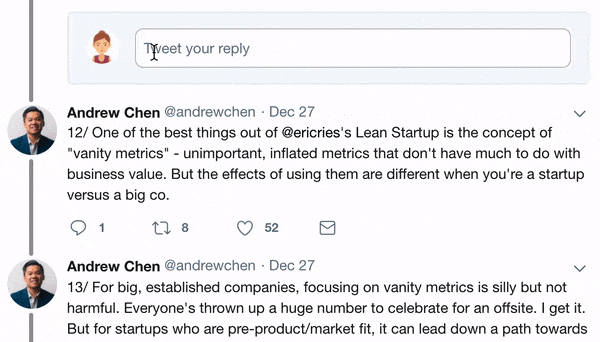
Some numbers that shocked me as I researched my new essay on war finance and monetary policy:
$1 trillion: amount Americans have paid on *interest alone* on money borrowed to fight the post-9/11 wars
$6.5T: amount projected owed by 2050
$6T: projected 2022 US federal budget
$1 trillion: amount Americans have paid on *interest alone* on money borrowed to fight the post-9/11 wars
$6.5T: amount projected owed by 2050
$6T: projected 2022 US federal budget
30: percent of WWI spending financed by taxes
50: percent of WWII spending financed by taxes
100: percent of Korean War spending financed by taxes
0: percent of Iraq and Afghanistan war spending financed by taxes
50: percent of WWII spending financed by taxes
100: percent of Korean War spending financed by taxes
0: percent of Iraq and Afghanistan war spending financed by taxes
20%: average decrease in public popularity in a war fought with higher taxes
0: number of new war taxes in the US since 1968
8: number of years the American war called "Operation Inherent Resolve" has been active in the Middle East, costing tens of billions
0: number of new war taxes in the US since 1968
8: number of years the American war called "Operation Inherent Resolve" has been active in the Middle East, costing tens of billions
1: time that war finance was discussed in 20 congressional fiscal hearings between 2001 and 2017 regarding America's conflicts abroad
70: percent of the time war finance was discussed in such hearings during the Vietnam era
$2.02T: amount spent as of 2020 on the post-9/11 wars
70: percent of the time war finance was discussed in such hearings during the Vietnam era
$2.02T: amount spent as of 2020 on the post-9/11 wars
90: percent of Iraq and Afghanistan spending paid for by emergency bills exempt from spending caps and without requirements to offset cuts elsewhere in the budget
35 and 32: percentages of Korea and Vietnam War spending paid for in the same way
35 and 32: percentages of Korea and Vietnam War spending paid for in the same way
$8.9 trillion: amount of US debt and mortgage-backed securities the Federal Reserve has purchased since 2008
$4.7 million: amount of assets the Fed has purchased *per minute* since March 2020
$4.7 million: amount of assets the Fed has purchased *per minute* since March 2020
9.85%: Federal Funds rate in 1989
0.08%: Federal Funds rate today
8.6%: Yield on a 2-year treasury in 1989
1.5%: Yield on a 2-year treasury today
0.08%: Federal Funds rate today
8.6%: Yield on a 2-year treasury in 1989
1.5%: Yield on a 2-year treasury today
$300 billion: amount that the US government would need to pay in additional interest for each 1% hike in rates
Unknown: yield on a 2-year Treasury if the Federal Reserve had bought $0, and not nearly $9 trillion, of securities since 2008
Unknown: yield on a 2-year Treasury if the Federal Reserve had bought $0, and not nearly $9 trillion, of securities since 2008
23: percent of American household wealth the 1% held in 1990
32: percent of American household wealth the 1% holds today
32: percent of American household wealth the 1% holds today
88.9: percent of stocks and mutual funds owned by the wealthiest 10% of Americans
40: percent of S&P total return since 2011 resulting from stock buybacks
40: percent of S&P total return since 2011 resulting from stock buybacks
130%: America's debt-to-GDP ratio today
50: number of governments that have defaulted out of a total of 51 whose debt has broken above 130% of GDP since 1800
50: number of governments that have defaulted out of a total of 51 whose debt has broken above 130% of GDP since 1800
60: approximate percentage of US debt owned by foreigners before the Great Financial Crisis
40: approximate percentage of US debt owned by foreigners today
40: approximate percentage of US debt owned by foreigners today
0: number of times the US government's 2011 final report on the Great Financial Crisis mentions the words Iraq or Afghanistan
0: number of times the Modern Monetary Theory manifesto "The Deficit Myth" mentions the words Iraq or Afghanistan
0: number of times the Modern Monetary Theory manifesto "The Deficit Myth" mentions the words Iraq or Afghanistan
250: years ago that Adam Smith said borrowing for war was a bad idea
2,000: years ago that Cicero said "nervi belli pecunia infinita": the sinews of war are infinite money
2,000: years ago that Cicero said "nervi belli pecunia infinita": the sinews of war are infinite money
Here's my full essay, "The Invisible Cost of War in the Age of Quantitative Easing"
Join me and special guests on a @BitcoinMagazine spaces to discuss these topics Monday March 7 at 4pm ET!
bitcoinmagazine.com/culture/how-th…
Join me and special guests on a @BitcoinMagazine spaces to discuss these topics Monday March 7 at 4pm ET!
bitcoinmagazine.com/culture/how-th…
• • •
Missing some Tweet in this thread? You can try to
force a refresh







